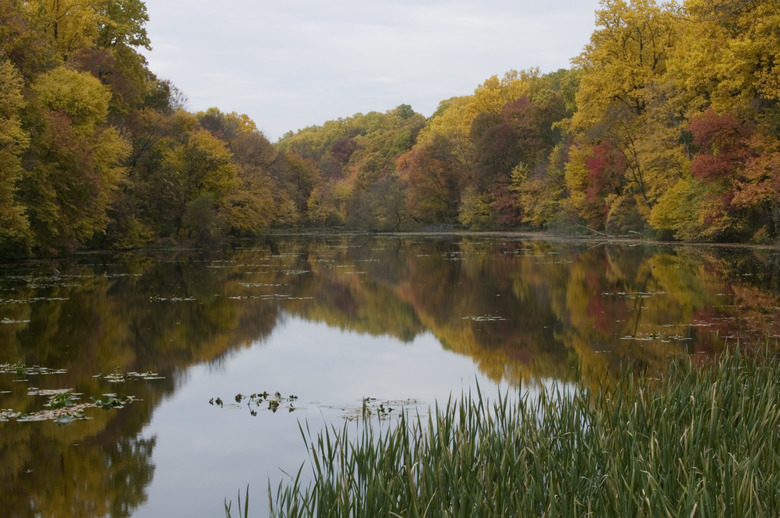Bodies Of Water In The Deciduous Forest
The deciduous forest is a common type of ecosystem, found throughout the temperate regions of the earth. Characterized by annual rainfall in excess of 30 inches, a change of seasons and trees that loose their leaves, these biological areas are found in both the temperate regions of the Northern and Southern Hemisphere. The bodies of water found within the forest include freshwater tributaries along with an occasional pond or swamp.
Freshwater Sources
Freshwater Sources
Many freshwater tributaries begin as small springs seeping from the ground. Not only are these tiny water outlets dependent on the ground water table for their annual flow, but also the cover of the forest canopy aids the process by repelling the intense heat of the summer sun and thus decreasing the evaporation rate. In general, freshwater springs occur when ground water stored in underground aquifers finds it way to the earth's surface. First as a stream, then as a small river the water flows down hill. The flow rate of the springs is dependent on the type of underground rock, the amount of water in the aquifer and seasonal rainfall.
Forest Tributaries
Forest Tributaries
Forest streams and small rivers form their own habitat that support and nourish many different types of plants and animals. Some of these organisms, like fish and a few invertebrates, spend their entire life cycle in the water, while others, such as the raccoon and kingfisher, might only be casual visitors. In drier regions of the forest some streams may be intermediate, flowing only during the wet season.
Freshwater Ponds
Freshwater Ponds
Freshwater ponds and lakes occur frequently within the forest, but as these watery areas increase in size, their exposure to sunlight also increases. Small ponds may have a shaded area, but anything larger will feature mostly open water. Lake and pond bottoms are determined by the geology of the area, the pond depth and terrain of the area. Just about all ponds and lakes have an inlet and outlet, as over time, these bodies of water may fill with sediment until they form a marsh.
Where the Forest Meets the Water
Where the Forest Meets the Water
Swamps may be one of the most fascinating of all forms of woodland bodies of water. Essentially these areas are flooded wetlands, where trees that are tolerant of very wet conditions flourish. Many swamps harbor deciduous species of conifers, such as the bald cypress or American larch. The bald cypress is of particular interest because it forms special knees, which aid in aeration and stability of the roots, when the plant grows in standing water.
References
Cite This Article
MLA
Bauholz, Henri. "Bodies Of Water In The Deciduous Forest" sciencing.com, https://www.sciencing.com/bodies-water-deciduous-forest-8358643/. 13 March 2018.
APA
Bauholz, Henri. (2018, March 13). Bodies Of Water In The Deciduous Forest. sciencing.com. Retrieved from https://www.sciencing.com/bodies-water-deciduous-forest-8358643/
Chicago
Bauholz, Henri. Bodies Of Water In The Deciduous Forest last modified March 24, 2022. https://www.sciencing.com/bodies-water-deciduous-forest-8358643/
